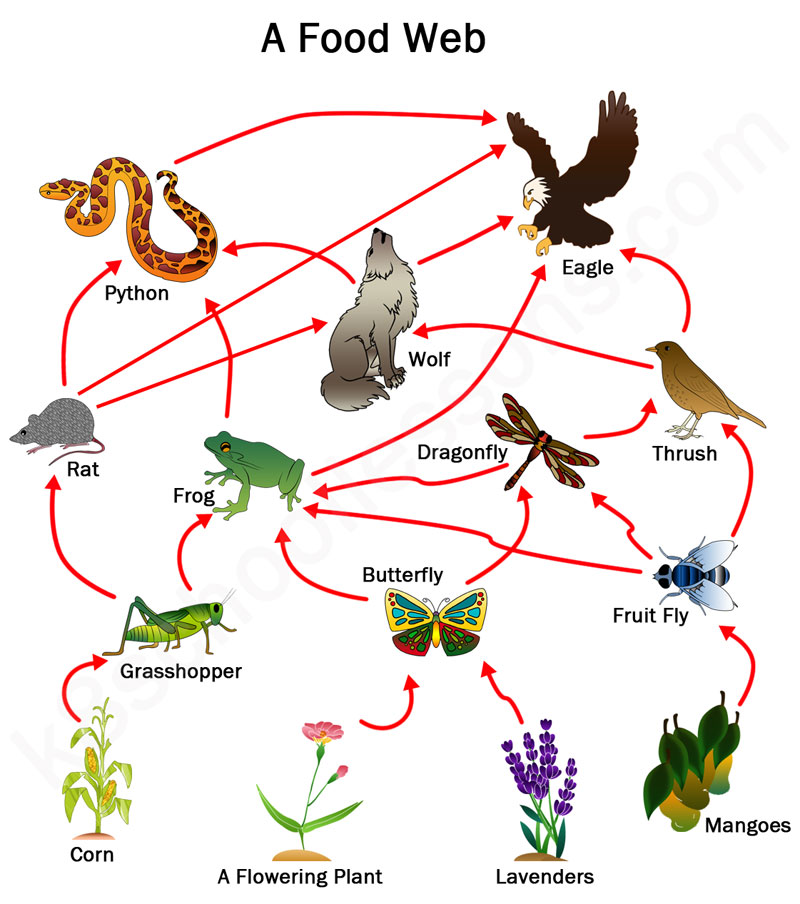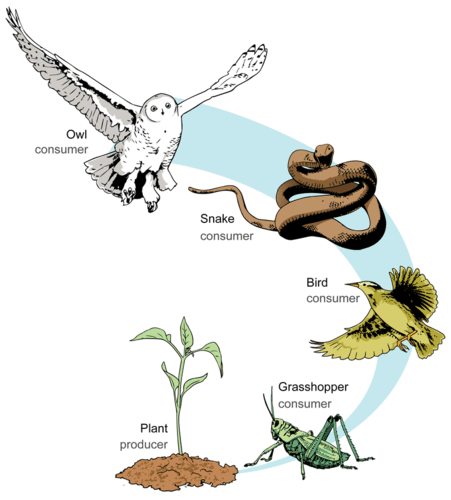Parts of an ecosystems that are living or were once living.
Biotic Factors
A food chain or web always starts with this. It is the source of all energy.
Sun
The second trophic level in an energy pyramid are known as _________
Primary Consumers
In the picture, what type of consumers is the grasshopper?
Primary Consumer
This type of biome is very hot and dry during the day, and cold during the night. There is little rainfall, and some animals that live here are camels and lizards.
Desert
Parts of an ecosystem that are non-living.
Abiotic Factors
This is a type of animal that only eats producers in a food chain or web
Primary Consumers
At each trophic level in an energy pyramid, _____% of the energy that is available moves on to the next trophic level.
10%
What 3 animals are primary consumers?

Grasshopper, Butterfly, Fruit Fly
The climate in this biome is generally hot. It is a dry season followed by a humid season. During the dry season, lightening often strikes the ground and causes fires. Some animals that live here are Elephants, Zebras, and Lions.
Savanna
The place an organism lives
Habitat
Arrows in a food chain or web represent the flow of _________
energy
90% of available energy does NOT move up through the trophic levels in an energy pyramid. Where does it go?
Lost as heat to the environment
Is this biotic or abiotic?

Biotic
One of the biggest environmental problems of the savanna biome is ____________ of certain animals.
Poaching (illegal hunting)
All the living and non-living parts interacting together in a system
Ecosystem
The only living thing to get their energy directly from the sun.
Producers
The third trophic level
Secondary Consumers
The process green plants use to capture the sun’s energy and transform it into food is called

Photosynthesis
This biome is situated in the arctic circle, and is the coldest biome! There is little vegetation due to having long winters and short summers.
Tundra
A living thing that gets energy by breaking down parts of dead plants and animals.
Decomposers
These type of consumers eat secondary consumers to gain their energy
Tertiary Consumers
If 100% of energy starts with the producers, how much energy will the secondary consumers get?
1%
Is this animal a carnivore, herbivore, or omnivore?

Omnivore
This type of biome has cold winters and hot summers. There are few trees here, but there is a lot of wheat, corn, and grass. Animals that live here are Deer, Bison, Coyotes, and insects.
Prairies
